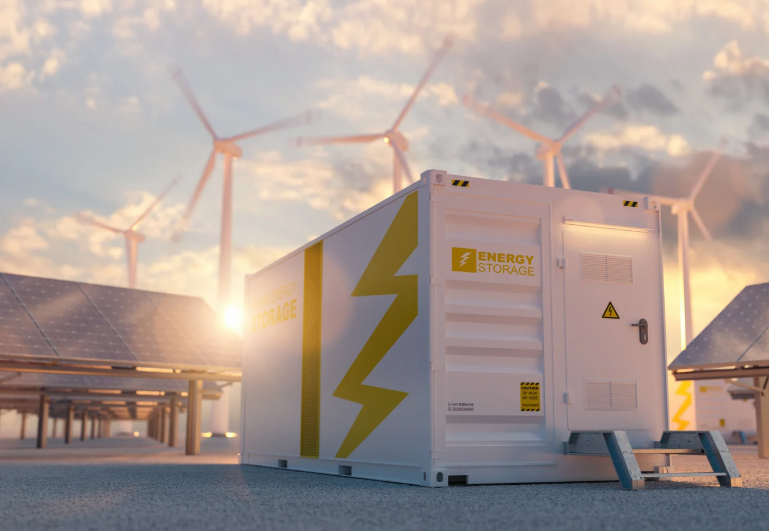Germany’s battery storage capacity reached 22.1 GWh by mid-2025, yet EnBW’s proposed 400MW/800MWh facility at the decommissioned Philippsburg nuclear site represents more than an economic opportunity—it embodies the complex realities of energy transition infrastructure financing without government subsidies. The country now operates nearly two million battery storage systems, but large-scale projects face mounting economic scrutiny as market dynamics shift.
EnBW’s decision to pursue the project without federal support occurs within a German market that added 100 large-scale battery systems (above 1MWh) in 2024, doubling the previous year’s installations. This acceleration reflects growing market confidence, yet the 800MWh storage duration represents a significant departure from typical two-hour BESS configurations, suggesting industrial-scale applications beyond standard grid services.
The Philippsburg site selection leverages existing transmission infrastructure built by TransnetBW, designed to channel wind power from northern Germany to southern industrial centers. This strategic positioning addresses critical grid bottlenecks that constrain renewable energy utilization, with storage systems increasingly deployed to manage transmission congestion rather than simple peak shaving applications.
Germany’s BESS market projects $2.27 billion revenue by 2030 with 30.7% annual growth, yet EnBW’s €50 billion decarbonization commitment extends well beyond battery storage alone. The utility’s positioning reflects broader recognition that the energy transition requires integrated infrastructure investment rather than technology-specific approaches.
The decommissioning timeline at Philippsburg provides context for infrastructure repurposing strategies. Both reactor units have undergone dismantling since 2017 and 2020, with the process expected to continue for decades. Battery storage development on adjacent land demonstrates how nuclear sites can transition toward renewable energy infrastructure while decommissioning proceeds independently.
Current German storage deployment patterns reveal market segmentation challenges that EnBW’s project must navigate. Residential installations dominated 2024 growth with nearly 600,000 new systems, while utility-scale projects represent smaller installation volumes but higher individual capacity. The economic case for 800MWh projects depends on grid service revenue streams that differ significantly from residential storage markets.
Industry projections suggest 7 GWh of large-scale storage additions through 2026, positioning EnBW’s 800MWh facility as a significant percentage of expected market growth. This scale raises questions about market absorption capacity and competitive dynamics as multiple utilities pursue similar projects.
The project’s 2027 completion timeline aligns with Germany’s accelerated renewable energy deployment targets, yet grid integration complexity extends beyond simple capacity additions. More than 160 GW of battery storage connection requests have been submitted by October 2024, indicating substantial pipeline development that exceeds current market absorption rates.
EnBW’s financing approach without government support contrasts with European BESS deployment patterns that typically rely on regulatory incentives or grid service contracts. The utility’s confidence in merchant market returns suggests either superior site economics or strategic positioning for future market developments that justify current investment without subsidy support.
The transmission-connected battery design targets wholesale market participation rather than distribution-level services, requiring different operational strategies and revenue optimization approaches. This positioning reflects growing sophistication in BESS deployment as projects move beyond simple arbitrage toward complex grid service provision.
Nuclear site repurposing presents unique advantages, including existing electrical infrastructure, transmission connectivity, and regulatory familiarity that reduce development costs and timelines. However, these benefits must overcome negative public perception associated with nuclear facility locations, potentially constraining community acceptance of new energy projects.
EnBW currently develops a 100MW/100MWh project in Marbach alongside pumped hydro investments, indicating diversified storage portfolio strategies that balance technology risks and market positioning. The Philippsburg project represents a significant scale expansion requiring operational expertise development and risk management capabilities.
Germany’s energy transition accelerates renewable electricity generation while creating grid stability challenges that battery storage theoretically addresses. However, the economic case for merchant BESS projects depends on market price volatility and ancillary service revenue streams that remain subject to regulatory changes and competitive pressures.
The proposed facility’s capacity to supply 100,000 homes daily represents marketing positioning rather than operational reality, as grid-connected BESS systems provide multiple services, including frequency regulation, transmission support, and market arbitrage, rather than direct residential supply. This capacity claim requires scrutiny within actual operational contexts and revenue generation models.
EnBW’s investment decision occurs amid broader German utility sector transformation as traditional generation assets face decommissioning while renewable integration requires substantial infrastructure investment. The company’s strategic positioning reflects confidence in battery storage economics that extends beyond current market conditions toward anticipated future revenue opportunities.
